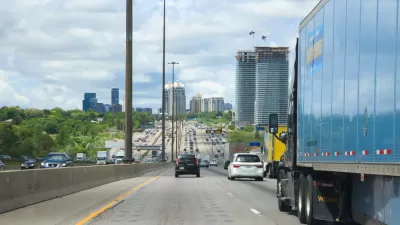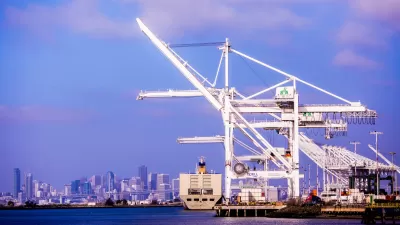Lax code enforcement is one of the concerns being raised by the devastating fire that occurred during a rave-style party, Artists had taken up residence in the building, which was not permitted for either general assembly events or residences.
The cause of the fire is unknown and a criminal investigation has begun. The death toll has exceeded the great 1991 Oakland Hills fire, which killed 25 people and injured 150 others.
"We absolutely believe the number of fire fatalities will increase," said Oakland Fire Battalion Chief Melinda Drayton.
"Sgt. Ray Kelly, a spokesman for the Alameda County Sheriff’s Department, said the majority of the victims were in their 20s and 30s, but that some were teenagers," report Phil Willon, Paige St. John and Soumya Karlamangla for the Los Angeles Times. It is estimated that up to 100 people were inside the building.
Kelly said the Alameda County district attorney’s office has sent a team of criminal investigators to work alongside the sheriff’s arson task force and the Oakland Police Department
The investigators, including a property and land-use expert, are working to uncover any potential criminal activity that may have led to the blaze.
The police department "is also working with city’s planning and building department as well as the district attorney’s office," according to Oakland police spokeswoman Johnna Watson.
Officials have said the warehouse had been the subject of a city code enforcement investigation at the time of the fire due to complaints about health and safety issues. Some former residents described it as a cluttered “death trap” lacking fire sprinklers.
The building was known to house an artist collective but was not permitted as an artists' residence.
"City records cited allegations of at least three code violations at the building this year," reported the Los Angeles Times earlier. "The building was permitted for use as a warehouse, not for housing."
“This property is a storage [facility], but the owner turned it into a trash recycling center. The yard became a trash collection site, and the main building was [remodeled] for residential,” according to city records.
They said that a party or concert at the property would have required a permit, which had not been granted. They also said there was no evidence of fire sprinklers or alarms in the building.
The fire has also been linked to the housing crisis in the Bay Area, reported Nadia Prupis for Common Dreams. Another cultural tie-in was the dance party itself.
Nihar Bhatt, a DJ and record label owner who survived the fire, told the Guardian, "Warehouse parties have been a central part of Oakland for decades..."
Many of the underground venues that provide space for these communities operate without license in buildings that are not up to code. Yet when tenants do raise concerns about unsafe conditions, they may find themselves simply being evicted by city managers who deem the buildings too dangerous to live in, as happened earlier this year with another Oakland warehouse
"Artists already felt like an endangered species here as they watch the tech boom’s wealth spread from Silicon Valley to San Francisco and finally across the bay to Oakland," reports Chris Megerian for the Los Angeles Times. "Now they worry that the fire will only accelerate gentrification, causing the city to crack down on their homes and studios."
The inferno is now the deadliest structure fire since the Station nightclub fire in Rhode Island in 2003 where 100 people died. The fire was attributed to the illegal indoor usage of outdoor fireworks.
FULL STORY: 'People want answers': Criminal probe of Oakland fire launched as death toll hits 36

Planetizen Federal Action Tracker
A weekly monitor of how Trump’s orders and actions are impacting planners and planning in America.

Congressman Proposes Bill to Rename DC Metro “Trump Train”
The Make Autorail Great Again Act would withhold federal funding to the system until the Washington Metropolitan Area Transit Authority (WMATA), rebrands as the Washington Metropolitan Authority for Greater Access (WMAGA).

The Simple Legislative Tool Transforming Vacant Downtowns
In California, Michigan and Georgia, an easy win is bringing dollars — and delight — back to city centers.

The States Losing Rural Delivery Rooms at an Alarming Pace
In some states, as few as 9% of rural hospitals still deliver babies. As a result, rising pre-term births, no adequate pre-term care and "harrowing" close calls are a growing reality.

The Small South Asian Republic Going all in on EVs
Thanks to one simple policy change less than five years ago, 65% of new cars in this Himalayan country are now electric.

DC Backpedals on Bike Lane Protection, Swaps Barriers for Paint
Citing aesthetic concerns, the city is removing the concrete barriers and flexposts that once separated Arizona Avenue cyclists from motor vehicles.
Urban Design for Planners 1: Software Tools
This six-course series explores essential urban design concepts using open source software and equips planners with the tools they need to participate fully in the urban design process.
Planning for Universal Design
Learn the tools for implementing Universal Design in planning regulations.
Smith Gee Studio
City of Charlotte
City of Camden Redevelopment Agency
City of Astoria
Transportation Research & Education Center (TREC) at Portland State University
US High Speed Rail Association
City of Camden Redevelopment Agency
Municipality of Princeton (NJ)





























